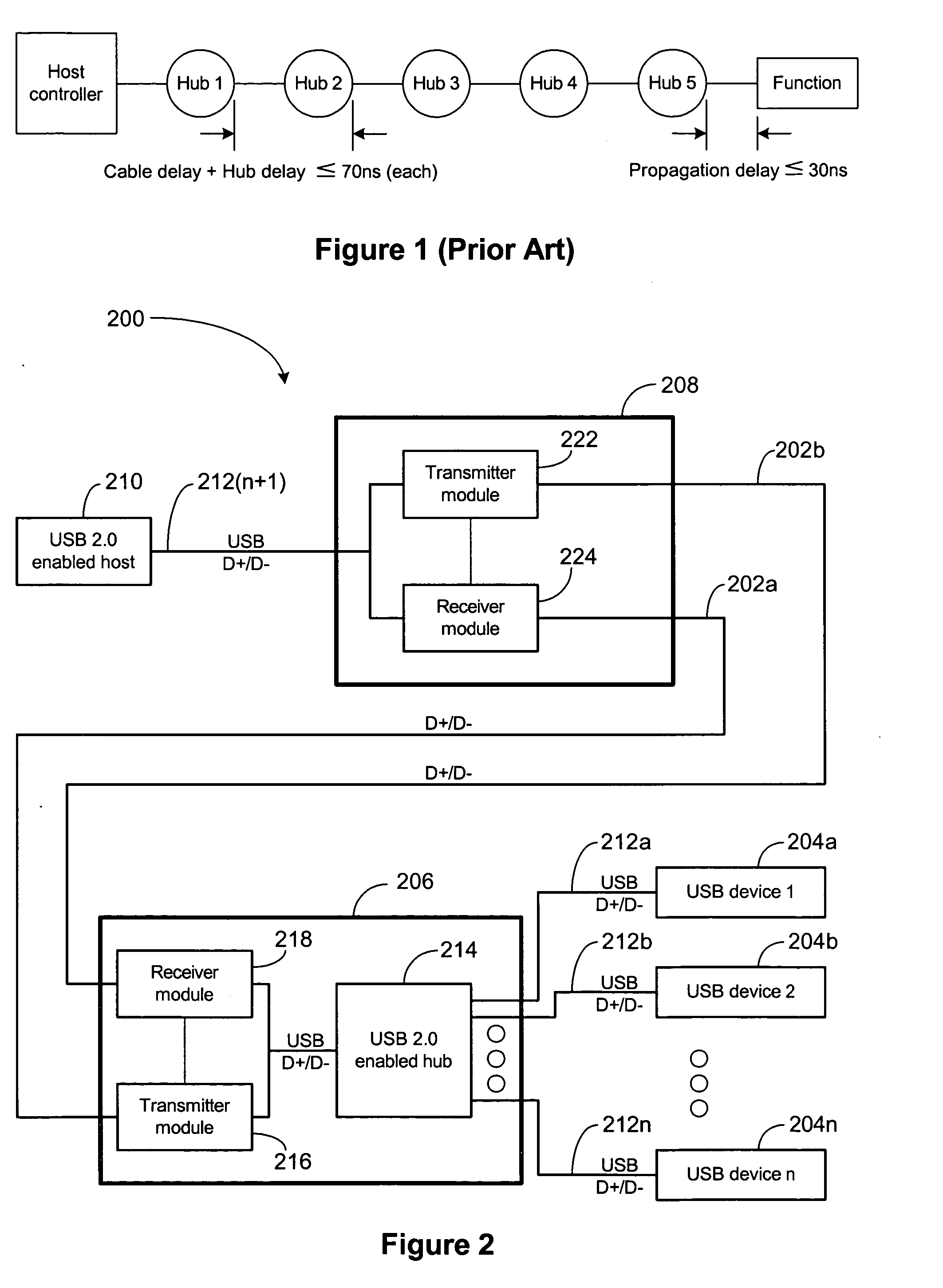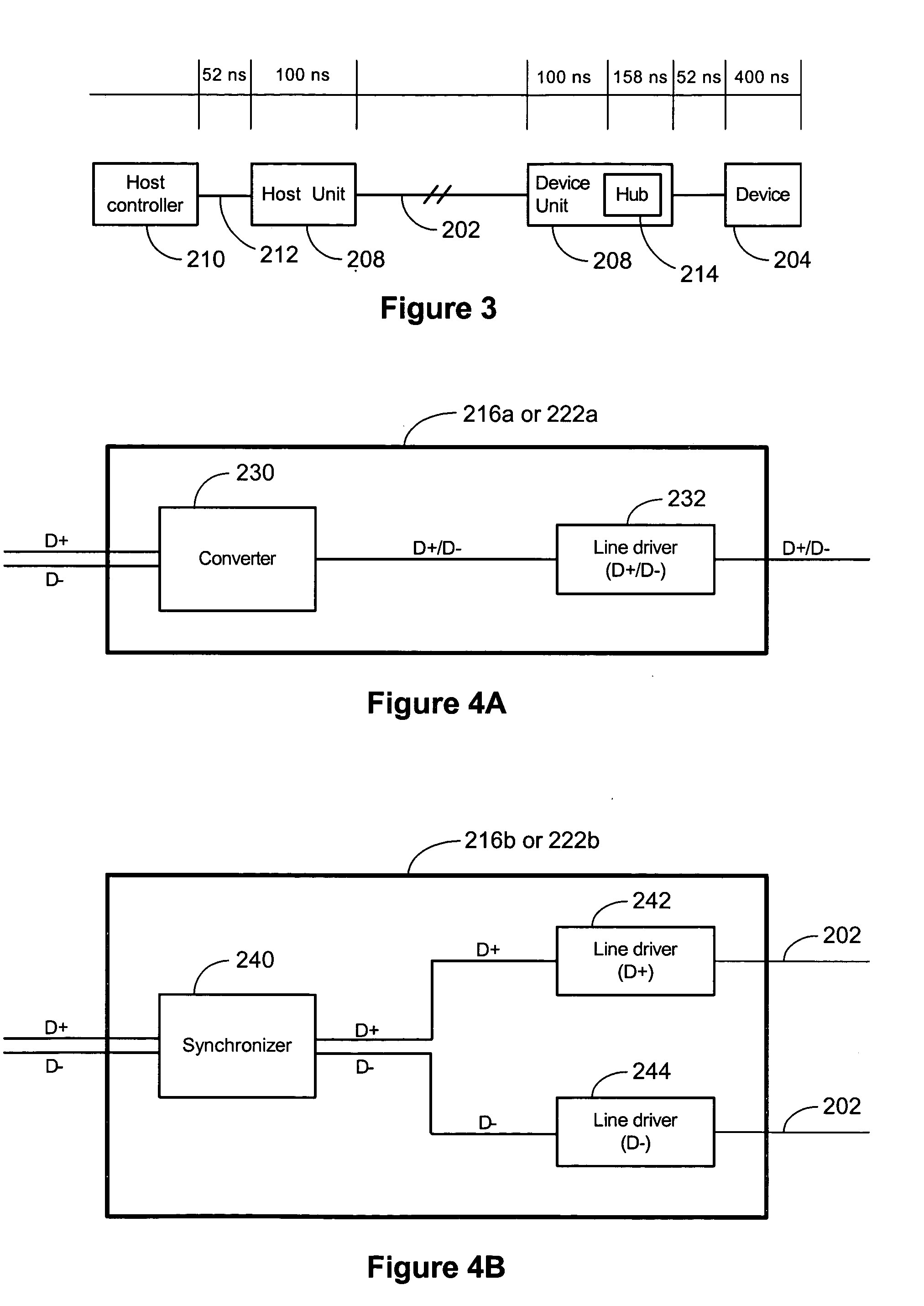USB extender
a usb extension and usb technology, applied in the direction of instruments, electric digital data processing, etc., can solve the problems of difficult to meet the electrical specifications of usb signaling using simple amplifiers or special cables, the usb cable longer than 5-10 meters generally will not work, and the usb cable beyond 5-10 meters is difficult to extend. , to achieve the effect of extending the distance between the usb host and reducing skew
- Summary
- Abstract
- Description
- Claims
- Application Information
AI Technical Summary
Benefits of technology
Problems solved by technology
Method used
Image
Examples
Embodiment Construction
[0025] Turning initially to FIG. 1, a diagram illustrating a prior art USB 2.x extension system is provided. The diagram of FIG. 1 can be found in “Universal Serial Bus Specification,” Compaq, Hewlett-Packard, Intel, Lucent, Microsoft, NEC, Philips, Revision 2.0, Apr. 27, 2000 at p. 169. The diagram represents the maximum round-trip delay introduced by extension. As shown, USB extension is accomplished by stringing together multiple short extenders, e.g., 5 meter extenders.
[0026] Whether an extender is a 1.x extender or a 2.x extender, a “passive” or an “active” extender, it preferably includes basic functionality to permit the passage of USB commands over extended distances. With all types of extenders, hand-shaking and message transfer typically are addressed as design considerations. An extender should initiate hand-shaking with a host and detect answers from the host. The extender should also answer the hand-shaking initiated by the device. In other words, the USB extender shou...
PUM
 Login to View More
Login to View More Abstract
Description
Claims
Application Information
 Login to View More
Login to View More - R&D
- Intellectual Property
- Life Sciences
- Materials
- Tech Scout
- Unparalleled Data Quality
- Higher Quality Content
- 60% Fewer Hallucinations
Browse by: Latest US Patents, China's latest patents, Technical Efficacy Thesaurus, Application Domain, Technology Topic, Popular Technical Reports.
© 2025 PatSnap. All rights reserved.Legal|Privacy policy|Modern Slavery Act Transparency Statement|Sitemap|About US| Contact US: help@patsnap.com



